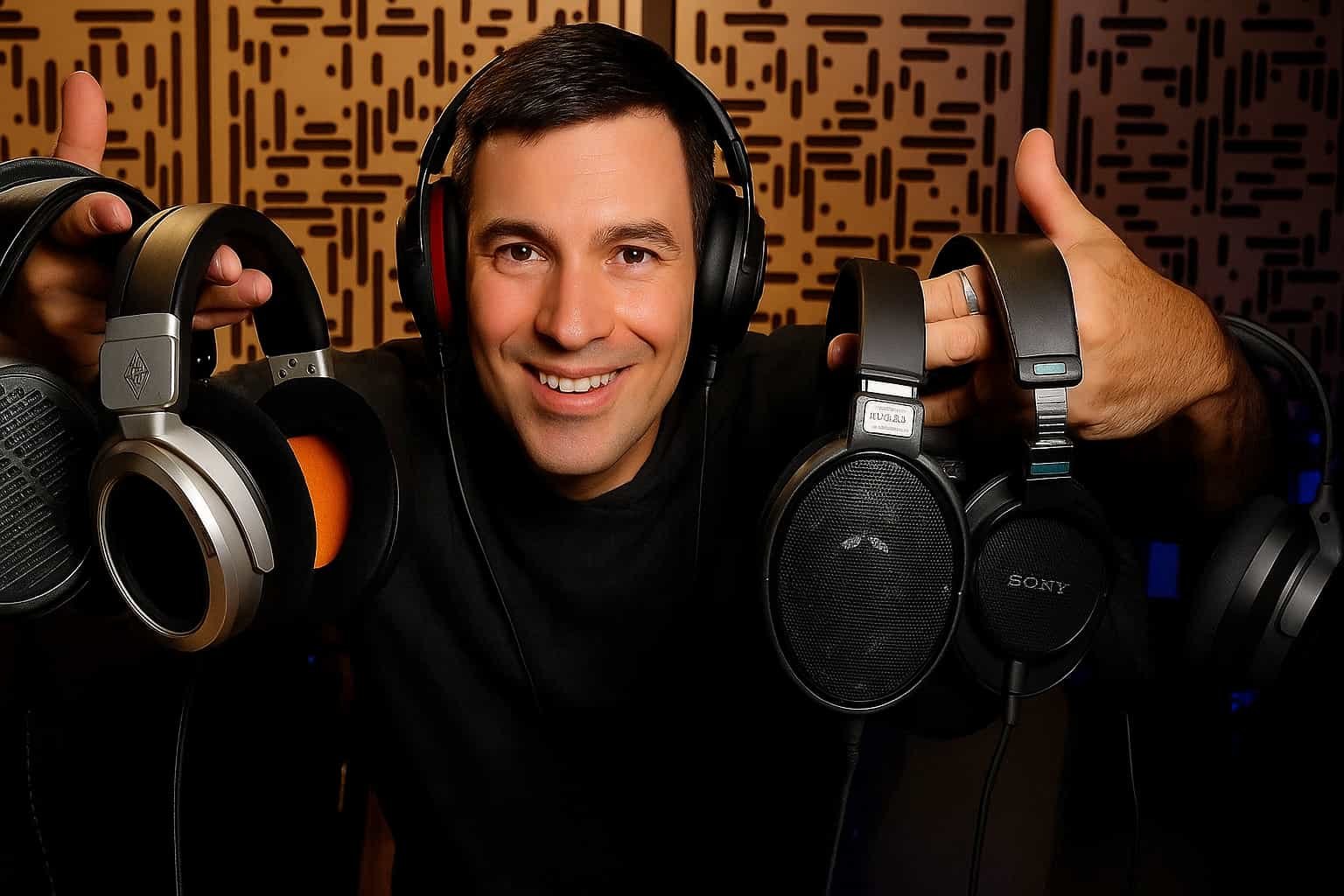If you’ve ever browsed through headphone listings online or in a store, you’ve probably noticed one thing — prices are all over the place. Some models cost just a few euros, while others climb past the $300 mark without blinking. So, is it really worth spending big on headphones? Or can you get something decent for a lot less?
As someone who’s tested and written about audio gear for years here at mamijagaming.com, I’m here to tell you — cheap headphones can absolutely be worth it. It all depends on what you actually need, and how you plan to use them.
Expensive Doesn’t Always Mean Better Sound
Let’s start with something honest: price doesn’t always reflect quality. Yes, high-end headphones often come with great sound, but you’d be surprised how many budget models sound just as good — or better — than pricier ones.

There are $20 headphones that outperform $100 pairs, and even some mid-range models that beat out so-called premium options. It’s not rare. The audio world isn’t that simple. And with the progress in headphone tech, even cheap headphones these days are pretty solid.
What Do You Really Need From Headphones?
Before buying, ask yourself: what features do I actually need, and what am I just tempted by?
Here are a few things that raise the price — sometimes without adding much value for certain users:
- Active Noise Cancelling (ANC)
- Transparency mode
- Bluetooth multipoint
- Spatial audio or 3D sound
- High-end audio codecs (aptX, LDAC, etc.)
If you’re only using headphones for podcasts, phone calls, or casual music listening, you might not need any of that. A simple, well-built pair that fits comfortably could serve you better — and cost far less.
Think About How You Use Them
Your lifestyle matters more than any product review. For example:
- Do you often lose small gadgets?
Then skip true wireless earbuds — they’re easy to misplace and not cheap to replace. - Do you work out?
Then water resistance isn’t a luxury, it’s a must. Go for something with IP rating and stable ear hooks. - Are you rough with your gear, or have kids around?
Maybe it’s smarter to buy a durable, affordable pair you won’t cry over if it breaks.
If you’re not commuting daily or working in a noisy office, you may not even need ANC. And if a feature sounds cool but you’ve never used it before, you probably don’t need it at all.
Don’t Stress Over “The Best” Headphones
The search for “the best” pair can be exhausting — and honestly, it doesn’t always make sense. Reviews and scores are useful, sure, but they won’t tell you how something will fit into your life.
One person’s favorite headphones could be a nightmare for someone else. Focus on:
- What bothers you in bad headphones (fit, durability, poor battery)
- What makes your daily use easier (buttons, comfort, simple pairing)
- What tradeoffs you’re okay with to stay in budget
The truth is, even “average” headphones today sound pretty decent, and the difference between “great” and “good” has gotten smaller over the years.
You Might Be Better Off With Wired Headphones
In a time where everything is going wireless, there’s still a case to be made for wired headphones.
Why?
- No need to charge them
- No connection dropouts or pairing issues
- Often better sound for the price
If your device still has a headphone jack, there are tons of solid wired options under $50 that offer clear, rich sound. Models like the Grado SR60x, KZ ZSN Pro X, or JBL Quantum 50 have great reputations and won’t break the bank.

Plus, no Bluetooth means one less thing to troubleshoot — no codec switching, no lag, no signal loss.
Troubleshooting: Why Do Cheap Headphones Sometimes Sound Bad?
Let’s say you’ve picked up a budget pair of headphones, but the sound is… off. It’s muffled, crackling, or just not what you expected. Before blaming the headphones, there are a few things you should check.
1. Lower the Volume
Some cheaper headphones distort at higher volumes, not because they’re broken, but because they’re not built to push that much sound cleanly. Try turning the volume down — if it sounds clearer, the issue might just be your expectations, not the hardware.
2. Check the Audio Source
Not all music files are created equal. Are you streaming at low quality or listening to old MP3s? That matters.
- On Spotify, make sure audio quality is set to “Very High.”
- On YouTube, bump the video quality to 1080p if it’s playing at 360p.
- Avoid old, low-bitrate music files — they can make even great headphones sound terrible.
Cheap headphones won’t hide flaws in bad recordings. If your source is poor, your sound will be too.
3. Clean Your Earbuds or Headphones
Yes — sometimes the issue is as simple as dirt.
Earwax, dust, or even pocket lint can block sound from coming through clearly, especially with in-ear models. Use a toothpick, a soft brush, or a dry cloth to gently clean the speaker grilles.
If your headphones went through the wash or got wet, let them dry completely. Some wireless models may recover after a day or two if the internals weren’t damaged.
4. Try a Different Jack, Port, or Bluetooth Setting
If you’re using wired headphones, test them in different ports or devices. Some laptops and desktops have weak headphone jacks — try plugging them into the back of the PC or a USB audio dongle instead.
For wireless headphones, you might be dealing with bad Bluetooth settings:
- On Windows, your headphones may show up as two separate devices: one for stereo music and one for phone calls. Choose the stereo option.
- On Android or iPhone, turn off “Calls” in Bluetooth settings if the audio sounds muffled — this forces the device to use the better music mode.
Sometimes it’s not the headphones — it’s the Bluetooth path they’re taking.
5. Adjust the EQ or Turn Off “Audio Enhancements”
Most phones and PCs come with sound settings that can do more harm than good. Things like:
- Bass Boost
- Spatial Audio
- “Loudness Equalization”
- Dolby Atmos (on by default on some devices)
Try turning these off, especially if you hear distortion. Sometimes the raw, unmodified sound is cleaner — especially on simpler headphones.
On Android, look in your sound settings or music app for equalizer controls. On iPhones, go to Settings > Music > EQ and disable anything that’s enabled.
6. Disconnect Other Bluetooth Devices
If you’ve got multiple Bluetooth devices connected, audio might be lagging, distorted, or even switching back and forth. Unpair everything except your main headphones and try again.
This is especially important if you use a smartwatch, wireless mouse, or fitness tracker — they all compete for signal space.
Conclusion: Cheap Headphones Are More Than Good Enough for Most People
Let’s be honest — you don’t need to spend $200 to enjoy music, podcasts, or videos. Today’s affordable headphones are far better than they used to be. They’re louder, clearer, and often just as comfortable as pricier models.
If you know what features actually matter to you, and you’re willing to troubleshoot small issues when they come up, you can easily get great sound for less.
So stop chasing perfection. Find what fits your life and your budget, and you’ll enjoy your music just fine.